By popular demand!!!
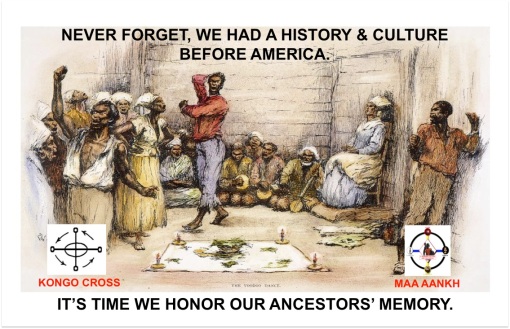
The debate over the ethnicity of the Kamitic/Kemetic people should be laid to rest by now, but the reason it isn’t is because Western academia (despite the overwhelming evidence against their ridiculous claim) is still in denial that black and brown people made significant contributions to the world. The other reason why this argument has not been laid to rest is because although knowing that the Kamitic/Kemetic people were black and brown people has done wonders for the majority of us culturally. Many of us are still at a lost as to how to use this information to improve our lives because we have not learned how to use our history from an African perspective.
When I moved beyond the Western approach of history of only being concerned with who, what, when and why, one of the interesting facts that I discovered was that Kamit/Kemet consisted of a number of African ethnic groups who all shared a similar cosmology. Signs of this cosmology have been found all over traditional Africa. For instance, the Nok people were an ancient culture dating between 900 B.C. and 200 A.D, the ancient ancestors of the Yoruba people. Interestingly, the name Nok it etymologically related to the Kamitic/Kemetic word Nuk, which means, “I AM”.
What was of particular interest to me was when I discovered that the Bantu people were one of the ethnic groups that once upon a time dwelled in Kamit/Kemet. It is believed that Bantu people, which is one of the largest ethnic groups in Africa, is responsible for spreading the Kamitic/Kemetic cosmology all over the African continent and possibly beyond. For instance, one of the interesting things about the word Bantu is that it is similar to the Kamitic/Kemetic words Ba (the Divine Intelligence/Spirit corresponding to Osar/Ausar/Osiris) and Ntu (plural for men/women – meaning people). It was based upon this observation, led by my ancestors that I learned that in Kamitic/Kemetic cosmology, color (iwen) symbolizes a lot of things. The Kamitic/Kemetic artisan had at several types of colors that were created from minerals that they found in the earth. Unknown to most is that the minerals used to make these colors also reflect what these colors mean, and their significance to the Kamitic/Kemetic culture. The same was and is still practiced in the African Diaspora. For instance, we have:
The color green (wadj/udaj) was made from mixing copper oxides of copper and iron with silica and calcium or from the natural copper ore malachite. While the color white (hedj and shesep) was produced from chalk and gypsum, in other parts of Africa this color is created from clay. Most of the sacred bowls and other objects in regards to embalming were made of white alabaster. Clothing including the gowns and footwear were white.
In Chapter 77 of the Pert em Hru (the so-called Book of the Dead), it is said that the deceased will become a falcon “whose wings are of green stone” Most Western scholars would assume that this stanza is impractical because they have no understanding of African spiritual culture. This is why they confuse Osar and claim that he is a fertility deity. If they only would humble themselves any true descendant of Kamit/Kemet would tell them by looking at Osar that, the color white is the color of purity, cleanliness and stability because it corresponds to bones, skulls, and the land of the dead, the Underworld, the Land of Osar or the Honorable Ancestors. The color green is associated with fertility and joy, which explains the reason why all throughout the folk Afro-Diaspora the color green is still associated with fertility and money. This means that Osar or the Aakhu (Ancestors) are responsible for fertility, hence the color of Osar’s face. To this day, many African descendants still honor their ancestors so that they can have prosperous crops. Ever heard of the New Yam Festival that takes place in Ghana and Nigeria? It is similar to the West’s Thanksgiving, but you would be very hard pressed to find an archeologists say this, because it seems they are content in making the Kamitic people appear to be polytheistic. This is why we have to move beyond the Western interpretation and tap into ancestry.
Osar is the symbol of a high ancestor and the ancestors are also honored so that one can conceive children, which is a tricky thing when you are talking about appealing to the dead for life. But, the Aakhu simply put cannot be destroyed because they are hedj (pure white) hence the backbone of Osar-the djett (stable). This cultural belief still exists throughout the African Diaspora, that children are ancestors being reborn or returning to the Land of the Living, but it is the ancestors that are our cultural backbones. This is why in the Story of Osar, Oset magically conceived the child Hru. It is very deep, mystical and beautiful when you think about it, and really makes you appreciate strong mothers.

Moving on, the Egyptologists and Kemetic reconstructionists will tell you that the color red (desher), was created, from red ocher and oxidized iron. What they fail to mention is that this was also the color the people, would sometimes paint their body, because it corresponded to the envious Set and the fiendish serpent Apep. The color red was also associated with the red crown of Kamit/Kemet called the Deshret. While various objects were made of red stones to evoke the Eye of Ra. Some will tell you that the color red means “life and victory” but this would seem to contradict the fact that Set and appep were also associated with it. When we look to African cosmology we find that the true meaning of the color red is that of mediation.

The color red corresponds to the land of the living that the Kamitic/Kemetic philosophers called TASETT, the material realm (or materialistic reality) that is governed by Set and the appep. Metaphorically is symbolizes our Lower Self. Early Christians adopted the concept and this is why to this day they say the material world or secular world belongs to the Devil. There are also other sayings like the Devil in the Flesh, the Devil controls the Flesh and the Flesh is Weak, which are all referencing this age old cosmology. It should also be noted that if you look back far enough early Christians once believed that the literal Hell was in the north. This is where the idea of St. Nick or Santa Claus was derived from.
When it is understood that the color red means in Kamitic/Kemetic cosmology it becomes clear that it refers to the living because every physical living being metaphorically speaking has blood in them that gives them physical life. There is a double meaning to this as well; this means that everyone also has the potential to commit evil – hence the origin of the original sin concept. When we compare this to the Legend of Osar it makes sense why Hru must fight to reclaim his throne from Set. He is fighting to establish a balance between the spiritual and physical reality or the physical reality will totally consume him as it has done his uncle Set.
Again, when we look in the Afro-Disapora amongst traditional practitioners we find that the color red clearly symbolizes this same concept of mediation. Ellegua the Yoruba psycho pomp aspect of Npu (Sebek/Anubis) who is able to go anywhere, color is red, but Ellegua also has a sort of trickster like nature, which is why European missionaries quickly associated him with the devil. The same has been done with Npu (Anubis). Whenever you watch any movie about Egypt, Npu is always incorrectly depicted as being evil. Again, this is due to lack of understanding in African cosmology. The color red also can be seen in the heroic Shango, whose arrogance, ego and abuse of power has got him trouble a number of times. Like his Kamitic counterpart Hru (Hrw, Heru or Horus in Greek), he is rescued or redeemed from a cooler headed divinity (according to some legends) by Obatala. Hru on the other hand is saved by Osaw (Asar, Ausar or Osiris in Greek), the Kamitic/Kemetic owner of whiteness and so on. Let’s continue…
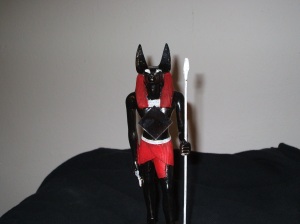
The color yellow/bright gold (khenet/kenit) was made from natural ochres and gold color from gold and silver alloys. This most famous color was used extensively in Kamitic art. Many are familiar with it because of its use to adorn the faces of the mummies and the numerous statues, jewelry and other finds. Many will claim that it corresponds to the sun but this is only part of its meaning. From a metaphorical perspective, the Kamitic people being keen to puns, the color yellow and gold means to become a shiny one, a glimmering or flashy one like a star. Stars have always been seen as enlightened spirits or angels hence the dog star Sirius. Note that one of the words for stars in the Kamitic/Kemetic language is Sba. Stars like enlightened spirits are guides. Some of these guides had the abilities to take the form of nature and were associated with shiny metals and precious stones like quartz. This is why early African Americans would take quartz and make them into mojos (or hand charms) so that the spirit could guide them to their objective. This also explains the reason why Npu was in charge of the Opening of the Mouth Ceremony for the deceased, because he helped the newly deceased to be guides or spirit guides. Esoterically speaking, the color also refers to a new life or divine energy, hence the spark of life.
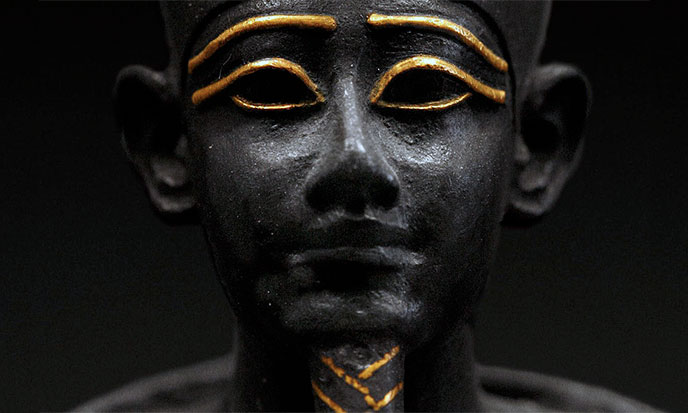

The colors blue and black are similar colors to each other. The color blue (irtiu, sbedj), which was made by combining oxides with calcium created a rich and unstable blue color. Many will tell you that it corresponded to crops, fertility and rebirth, but this is incorrect. Many arrived at this conclusion because the phoenix, which was patterned after the heron, had bright blue feathers. Baboons were also colored blue even though they are not blue at all. For this reason Egyptologists and reconstructionists assumed that Amun whose face was blue colored was associated with fertility and rebirth as well.
The color blue is associated with mysteries as well, but these mysteries are the mysteries understood and known by humankind. If we were to compare this color to water it would be considered shallow waters. This is why the herons and baboons were associated with it. The heron is able to stand, walk across these shallow waters or lightly step upon the floral resting on the waters. Certain monkeys and primates are able to play around these shallow waters as well. The reason the phoenix and baboon were colored with the unstable color blue, which are associated with Djahuti (Tehuti/Thoth) is because they correspond to wisdom, hence experience. Wisdom has the ability to change anyone’s life but how do most people get wisdom? Hard knocks, trial and error, etc. is how most people get wisdom, which brings one closer to God. Amun by the way is not God, no God is Amun “The Hidden One”, which is why His/Her face is blue because it is a Hidden aspect of God that controls the mystery of rebirth and renewal, not fertility or said another way, the mysteries of the Wisdom.

The color black (kem, kam) was created from carbon compounds such as soot, ground charcoal or burnt “animal bones“. I underlined bones because remember that bones are also associated with Osar. Anyway, Western scholars and recinstructionists have desperately tried to associate this color with a negative connotation, so they claim that this is the color of death and the night. Again, Npu (Anpu/Sebek/Anubis) whose colors are also black is often depicted as being evil in most Egyptian movies like the silly films The Mummy and The Mummy Returns because Westerners don’t understand African cosmology. This is why we find that the word necromancy is said to be evil or a form of black magic. The truth is that necromancy, which is derived from the word negro-mancy and niger-mancy refers to the practice of communicating with the ancestral dead. Although there are Western cultures that have practiced this form of divination throughout history prior to the spread of Christianity. The practice was forever associated with traditional African cultures particularly Kamit/Kemet because this is how they communicated with deceased rulers. It was a unique form of ancestor veneration, which is incorrectly called ancestor worship. So, what was so important about the color black?
Again, when we return to African color symbolism and how people in the African Diaspora have used this color we see that the color black is the color of mystery and rebirth. The color black refers to the deeper mysteries or deep waters. These deep waters refer to the mysteries of the woman’s womb; no one knows (without dissecting and cutting people up – a true un-holistic approach to medicine) how a child is born, because it is a mystery. No one knows how many stars exist in the night sky because it is a mystery. No one knows how many ancestors one has, because it is a mystery. No one knows what happens after life because it is a mystery. Everything that exists in the dark is a mystery requiring that one use their inner eye. The loas of Vodun are called mysteries, just like all spirits in African traditions are referred to as mysteries. This is why the jackal, which technically speaking are brown colored, as Npu is depicted in the color black because he is a mystery and has the ability to lead us from and to this mysterious realm – the Spirit world. This is why the Kamitic/Kemetic philosophers called the southern region of the country the Black Lands. Literally, it was a reference to the fertile soil but spiritually it referred to the mysteries within, so they called it KAMTA.
KAMTA is where Osar dwelled symbolized as the southern white Hedjet crown. Osar you will recall is the Lord of the Underworld and the first great ancestor according to Kamitic/Kemetic cosmology. Westerners in their lack of understanding of this mysterious realm and fear of death called this realm Necropolis and those that followed the old Kamitic/Kemetic Way of Life in the past, necromancers. But, the true understanding of the word necromancy or negromancy is to communicate with the dead, hence ancestors/spirits. It was an old practiced in which one would scry into black-colored water, the color water signifying of course the deeper mysteries in the hidden world. A similar practice is used today but instead of dark water, mirrors and other reflective devices are used. This is another clue referring back to ancestor veneration, which is a widely practiced tradition throughout the African Diaspora. Clearly as you can see Westerners have no clue what they are doing because they are not biologically and/or culturally linked to this tradition.
Basic Kongo Cosmogram
When we compare all of this above to the Kongo yowa cross or dikenga color symbolism. We find that Kala means black, sunrise, the east and birth…the same as Khepera. Tukula refers to the color red, the midday sun, the north and life…same as Ra. Luvemba refers to the color white, sunset, the West and death….so does Ra Atum (and later Osar as Tem). Finally, Musoni refers to the color yellow, the moon and rebirth…so does Amun Ra. It is clear to see that the Kamitic/Kemetic people are culturally the forefathers and mothers of many in the African Diaspora. All of this as you can see can be traced right back to Kamit/Kemet.
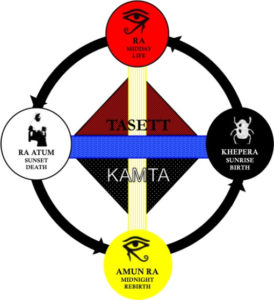
This means when we put it all together. The Kamitic/Kemtic people didn’t worship the sun. They didn’t worship gods and goddesses. Amun Ra, Khepera, Ra and Ra Atum are not gods, but are concept used to express a deeper truth about who and what we are, and our relationship to the Divine. Your birthright has not been lost. All you have to do is reclaim it, so claim it now!
Check out Part II of this article.

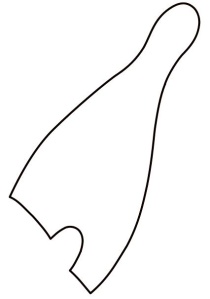
Ase, thank you .
Reblogged this on Green Ankh Works.
Thank you for this knowledge 💜
I’ll right away snatch your rss as I can’t find your e-mail subscription hyperlink or e-newsletter
service. Do you have any? Kindly let me recognize so that I may
just subscribe. Thanks.
This is an amazing site because i’m doing research on this type of stuff , and well it helped a lot so thank u for also being throe
Thanks Bigcat.
Glad that this post could assist you in your studies. If it is not too much trouble, keep me inform on how things are coming.
Peace.
THANK YOU!!!
Your way of describing everything in this piece of writing is
in fact pleasant, every one be able to without difficulty know it, Thanks a lot.
Thank you. I appreciate you as well and hope that these posts will continue to help you wherever you are in this journey.
Hetep (Peace)
Enjoyed and was informed by your book. Recently read African Cosmology of the Bantu-Congo and was suprised to find your cycles there but seeing the above I understamd that you do acknowledge Dr. Fu-Kiau’s influence! Blessings.
Hetep (Peace)
Yes, Dr. Fu-Kiau Bunseki is the authority figure on the Kongo here in the Western hemisphere. His work insight has helped me greatly to make the connections or reconnection from the Kamitic to the Kongo cosmogram.
I am not sure which book you are speaking of but I am glad that you enjoyed it. If you could please post a review on Amazon, I would greatly appreciate it. Thanks again and stay connected.
Hetep
Thanks for the follow. Be sure to check out my other blog as well. Thanks,I really appreciate it. Hotep!
http://rbgsurvival.wordpress.com/
Your blog is just what I needed. You have no idea how long I have been pondering the same exact thing!
I am so comforted that I am no longer apart.
just shared this with a sista who is doing research in this area
hetep
Thank you for this information. I will link your blog to mine and also link you on my website. I hope you do not mind and that we can break bread some day soon by email. Hotep
Thank you for your kind words and interest. I will do the same for yours. Htp.
You are correct about everythn and the word kemet means land of de black .note: this word refer to the people who lived the .not colour of de soil. .and in South Africa some of us stil practise mummification of the dead mostly rural people like the”Tswana tribe” and the Waters stil hold secrets to us as a sacred place and of elders do tell us about people who live under water and some of our traditional healers stil visits the water God “Mmamogasho”